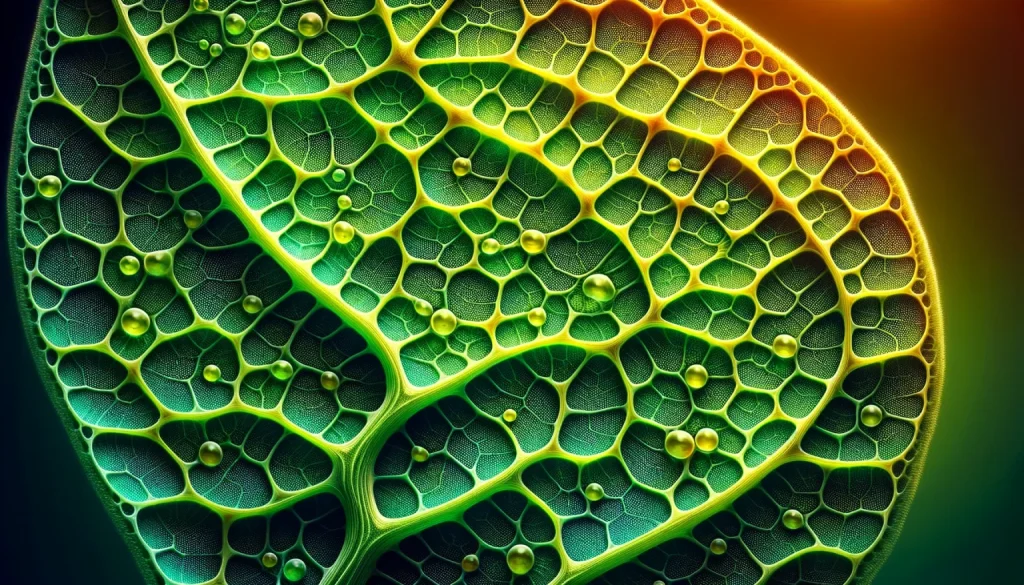Researchers reveal the secret geometry of life

Researchers have made a groundbreaking discovery bridging the realm of theoretical mathematics with the tangible world. (CREDIT: Creative Commons)
Researchers have made a groundbreaking discovery bridging the realm of theoretical mathematics with the tangible world: the emergence of a new shape, dubbed "soft cells," that not only exists in theory but is abundantly present in nature.
Mathematicians, historically fascinated by shapes and their intricate interlocking patterns, have predominantly focused on sharp-edged structures with numerous points, ideal for infinite tiling. However, these traditional geometric equations, characterized by rigid lines and sharp angles, seldom align with the organic forms found in nature.
A recent breakthrough from Budapest University of Technology sheds light on a novel class of shapes possessing curved edges, marking a departure from the angular constructs prevalent in mathematical discourse.
Examples for slightly curved polyhedric tilings. Up-per row: natural examples. Lower row: geometric models. One slightly curved face highlighted on each tiling. (a1) Metal foam (a2) Liquid foam. (CREDIT: Wiki-media Commons)
Shared on the preprint server arXiv, the team's findings introduce "soft cells" or "z-cells," devoid of the characteristic corners inherent in classical geometric shapes yet capable of seamless integration both in two and three dimensions.
Describing their research, the team articulated, "A central problem of geometry is the tiling of space with simple structures. The classical solutions... are built with sharp corners and flat faces.
However, many tilings in nature are characterized by shapes with curved edges... An important question is then to relate prototypical sharp tilings to softer natural shapes."
Related Stories:
Lead researcher Gabor Domokos emphasized the significance of this discovery, noting its prevalence not only in artistic expressions but also in biological phenomena.
Drawing parallels with muscle tissue sections, Domokos remarked, "If you look at sections of muscle tissue, you’ll see the cells having just two sharp corners, which is one less than the triangle—it is a very special kind of tiling."
Moreover, the team highlighted the widespread occurrence of these ideal soft shapes across natural domains, ranging from cellular structures to seashells. In elucidating the concept, they elucidated, "Remarkably, these ideal soft shapes, born out of geometry, are found abundantly in nature, from cells to shells."
Soft tilings in the plane: examples from nature and architecture. (CREDIT: arXiv)
In two dimensions, soft shell shapes are relatively straightforward—they comprise cells with curved boundaries housing only two corners. Expanding into three dimensions, the complexity increases, yet the fundamental objective remains consistent: accommodating flexibility while minimizing the presence of corners.
Domokos noted the intuitive adoption of these shapes by architects aiming to circumvent sharp edges.
Central to the team's findings is the revelation of seashells as a quintessential embodiment of the soft cell shape.
Examining shell structures through advanced imaging techniques, the researchers discerned a conspicuous absence of corners in three-dimensional measurements, despite the distinct appearance of corners in a two-dimensional view.
This observation underscores the intricate harmony between natural forms and geometric principles, showcasing nature's profound depth beyond conventional geometric understanding.
Genesis of soft 3D cells (CREDIT: arXiv)
The discovery of soft cells not only expands the horizons of mathematical inquiry but also underscores the remarkable convergence between abstract theory and tangible reality.
By illuminating the prevalence of these shapes in natural phenomena, the research underscores the enduring dialogue between mathematics and the natural world, unveiling new vistas for exploration and understanding.
For more science and technology stories check out our New Discoveries section at The Brighter Side of News.
Note: Materials provided above by the The Brighter Side of News. Content may be edited for style and length.
Like these kind of feel good stories? Get the Brighter Side of News' newsletter.









